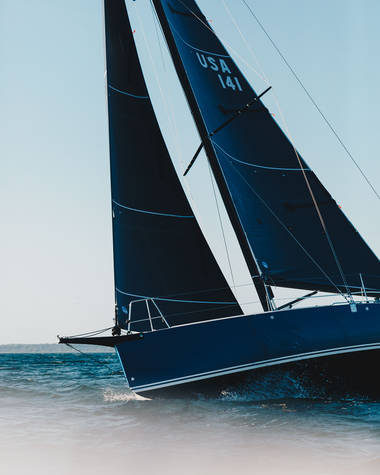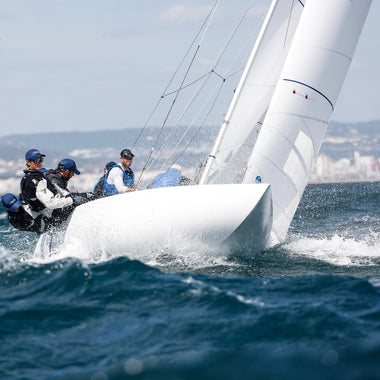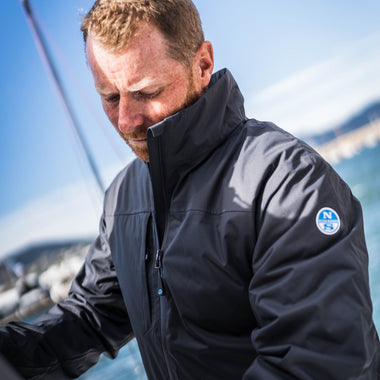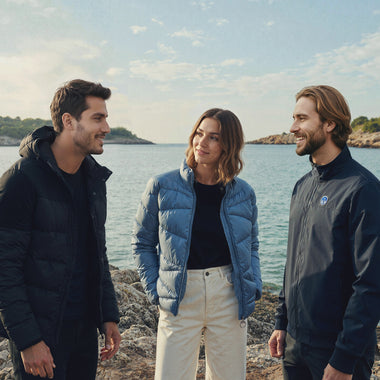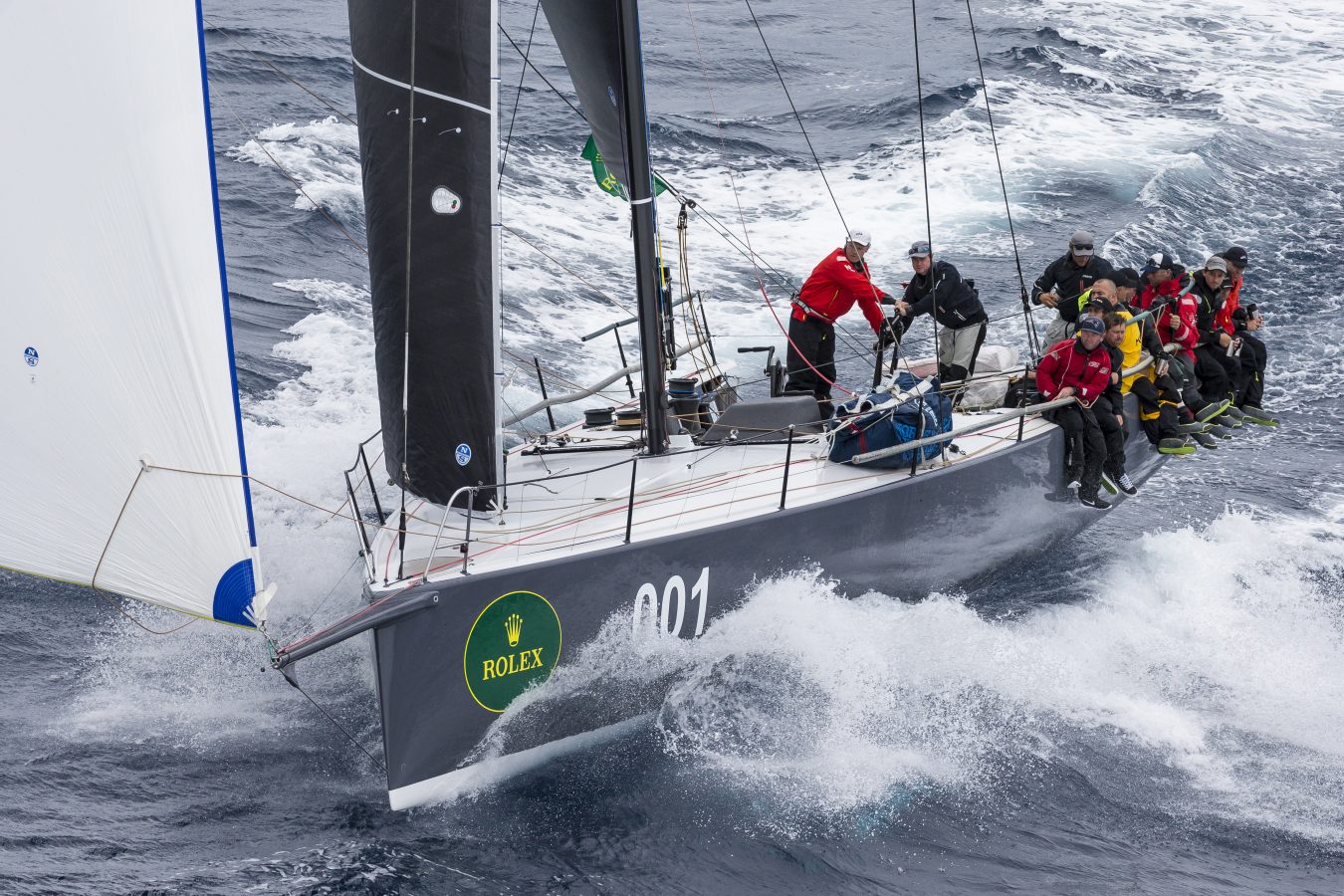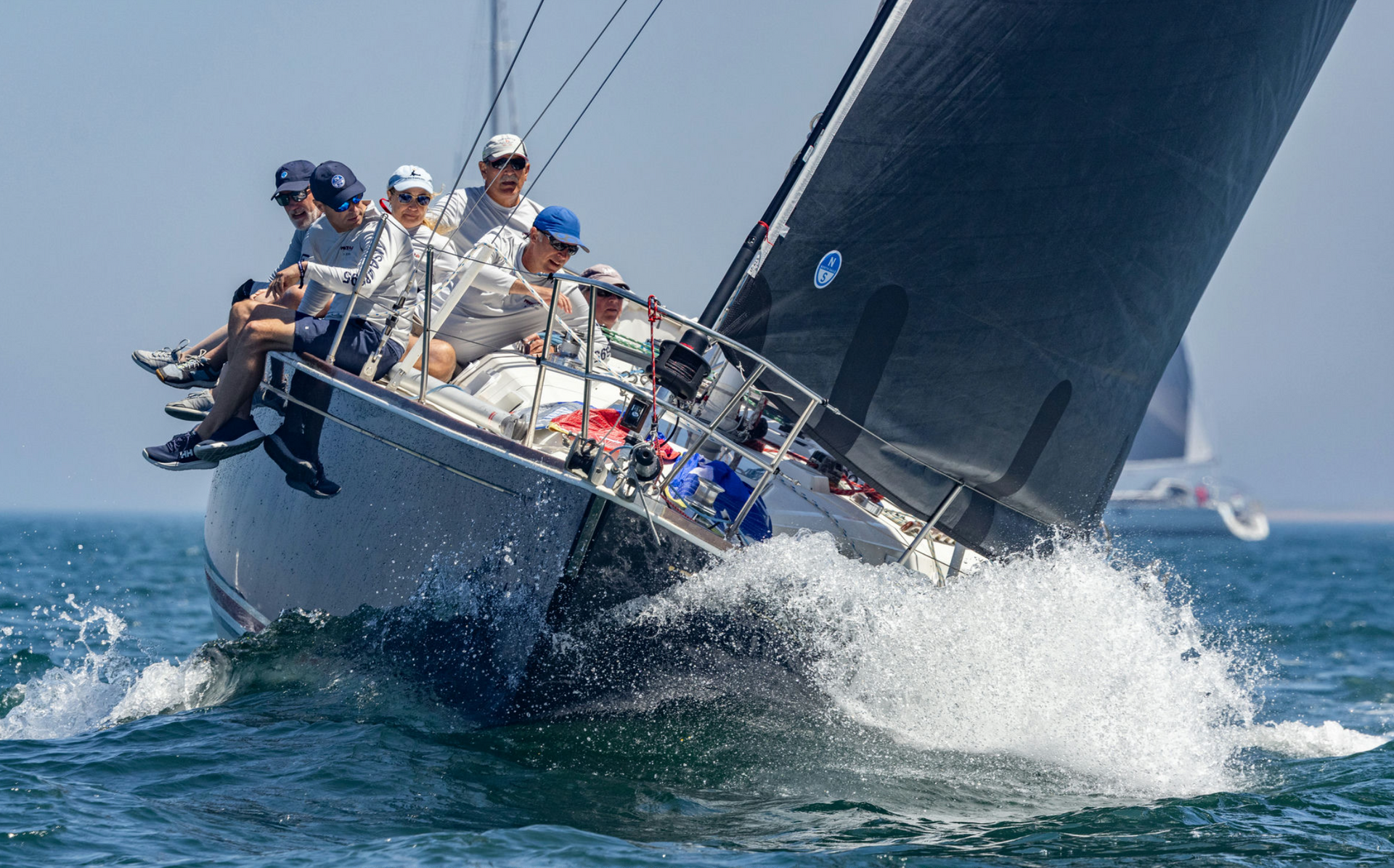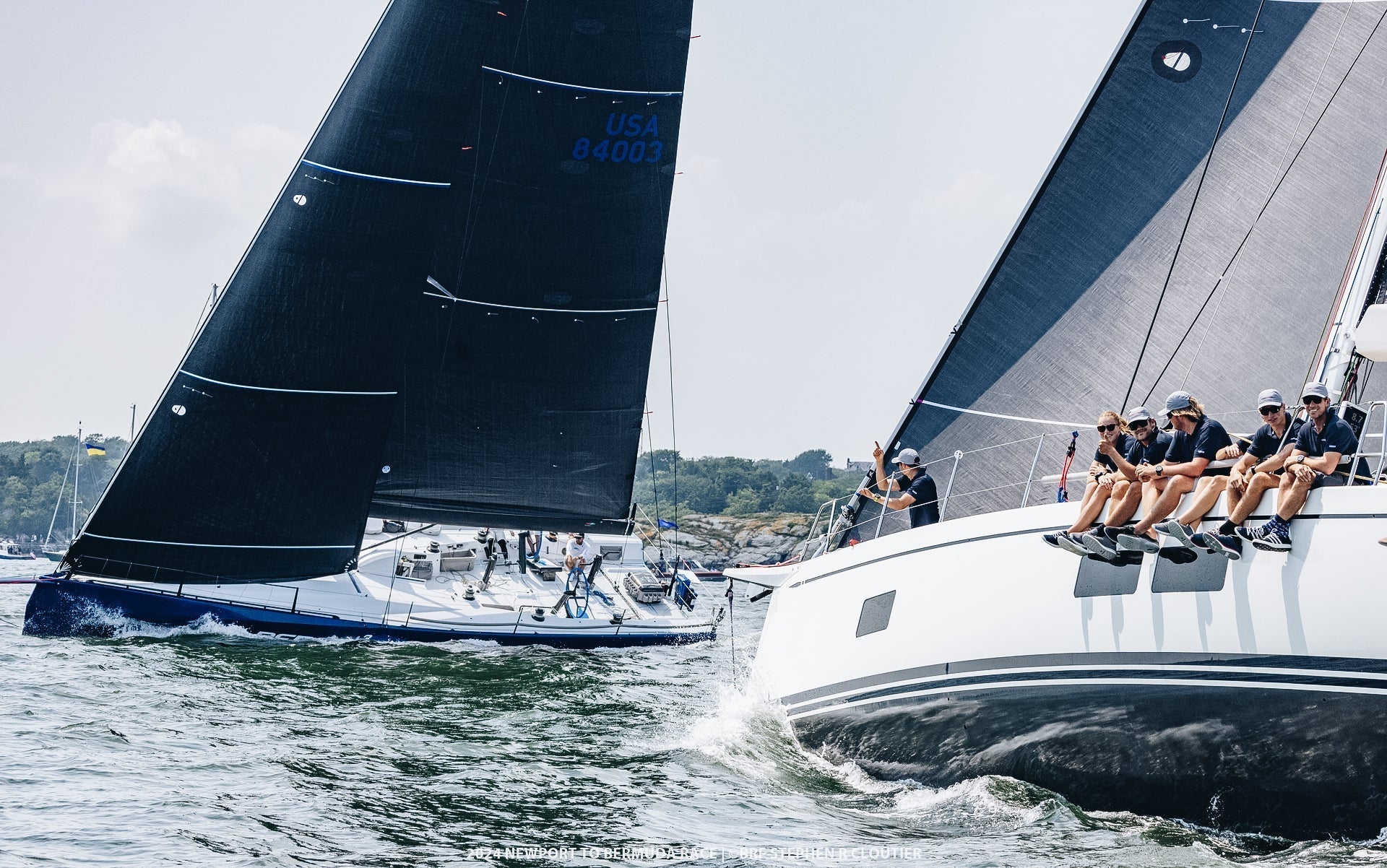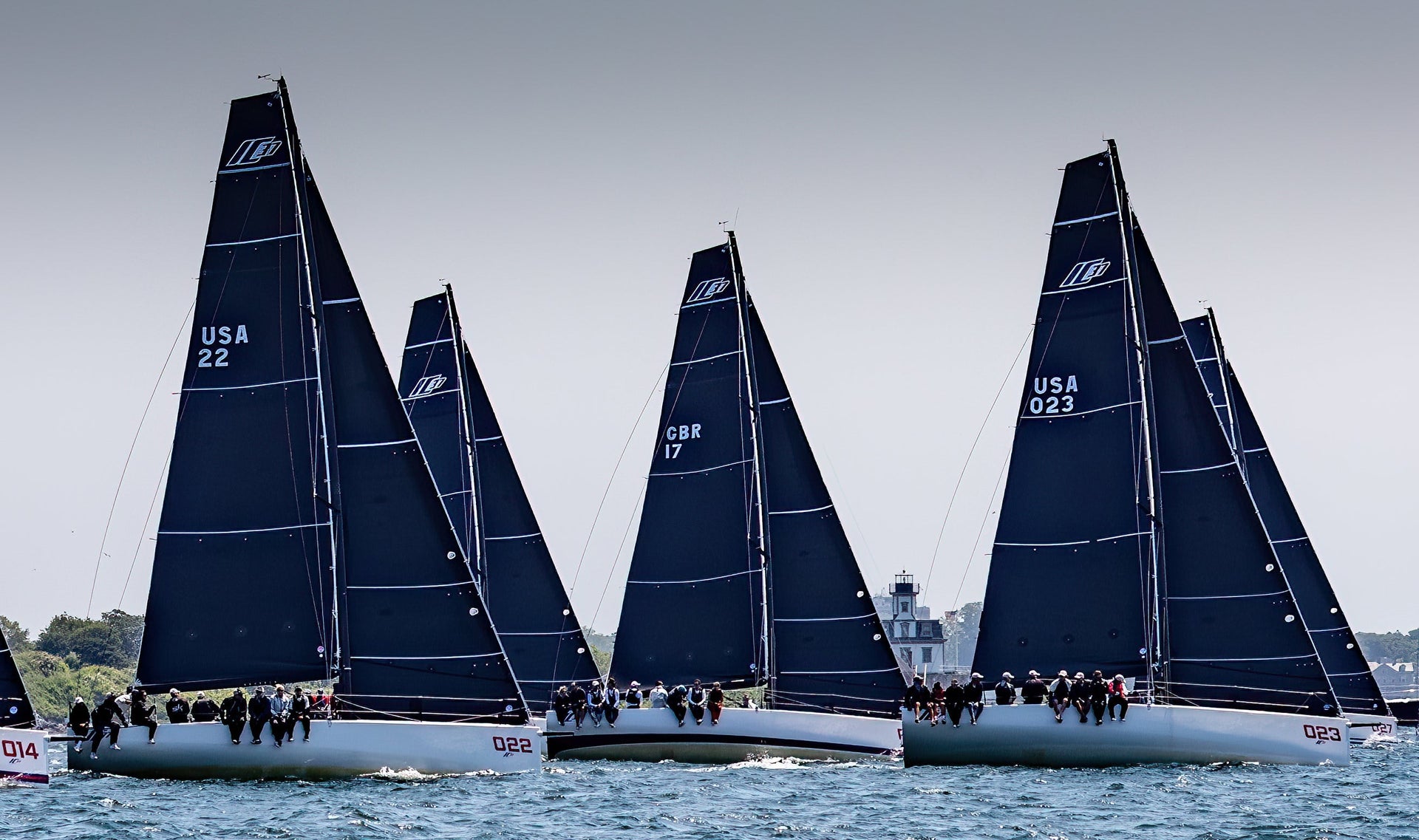LONG TIME NORTH CUSTOMER WINS ROLEX SYDNEY HOBART
LONG TIME NORTH CUSTOMER WINS ROLEX SYDNEY HOBART
Winning the RSHYR takes determination, preparation, and a well thought-out sail inventory

Matt Allen, a long-time North Sails customer, first won the Rolex Sydney Hobart Race 34 years ago. In 2017, he finally repeated the achievement on Ichi Ban when they were named overall winner of the Rolex Sydney Hobart Race. It was a fitting honor for a boat whose name translates to “number one” in Japanese. The win this year was even sweeter considering that Matt’s new TP52 is only three months old.
Billy Sykes, a member of the North Sails team in Sydney (AUS), was part of Matt’s crew on the legendary race. We recently caught up with Billy to talk about what it takes to win the RSHYR on a brand-new boat.
“The boat was fresh out the packet, which always brings the opportunity for things to go wrong because gear has not been tried and tested. But we managed to put all those things behind us and come away with the win for Matt, which was a great thing.”
Can you take us through the race and any key decisions the team made?
“The RSHYR is 628 nautical miles and unlike inshore racing, the start isn’t everything. That was certainly good for us as we were well out the back door at the beginning. But we know Sydney Harbor well and we managed to wiggle through and get back into a competitive position by the time we got to the top mark. I think we were the first to actually put up our (new) 3Di RAW Code Zero.
Matt had ordered that sail for the race and there is no doubt it helped us get back to where we wanted to be – at the front. From there, we just kept consolidating the whole way. This race was quite unique for a number of reasons; firstly we got to the bottom of Green Cape at six AM the morning after the start, which is exceptional considering this is almost the halfway point. And secondly, we did the whole race in one weather system, which is pretty extraordinary for a 52 foot yacht.
The moment we got our break was when we put up our A4 spinnaker again, which is our largest masthead spinnaker. We had a reef in the main and putting the A4 up was quite a big move, but Quest
The other important moment was when sailing master Gordon McGuire and navigator Will Oxley made the decision to take us about 15 miles past the layline to set us up for a big shift. It was a great call that essentially got all of our time back on Quest. Then we got into Storm Bay and had our Code Zero and jib up around Cape Raoul up to the Iron Pot, and after we got past the Iron Pot we actually got becalmed in the Derwent for about 25 minutes which was really stressful for the whole team

How was the mood onboard after crossing the finish line in Hobart?
“There was a bit of a nervous wait because we guesstimated we owed Quest about 40-45 minutes on corrected time. So we dropped the mainsail and were all pretty keen to hang around for the final result, because we knew if we beat Quest we would have a real chance to get the Tattersalls Cup. We had no control over the corrected finish times but to have made sure that we had as much time as possible on Quest was a real big deal.”
What did you enjoy the most about the race, other than winning?
“The challenge of downwind running pretty much the whole way. This is my twelfth RSHYR and I’ve never seen two years in a row where you’ve been hard running down to Tasman Island. We actually broke two race records this year; the ballasted record set and held by Brindabella in 1999 and the under 18.5 metre yacht record set by Yendys in 2008. The last bit into Tasman Island, hard running in 24 – 30 knots with our biggest masthead spinnaker up, was very challenging but also made for some amazing sailing.”
In one article, Matt Allen attributed the win to the latest technology and design and the most amazing crew he’s ever sailed with. Can you explain what he meant about the latest technology and design?
“Matt had a plan long before Ichi Ban came out of the shed. He bought the old Shogun and made quite a few changes to make it really ready for offshore sailing. Then after last year’s race Matt decided to build a new yacht and took all the things he’d learnt from the previous boats into the new Ichi Ban. It is a Botin design, Adolfo Carrau specifically who was behind it, and they did an exceptional job. The other part of the design would be the Southern Spars mast and working so closely with us on sails. All these things together made a huge difference in how hard we were able to push. In all the development, you’d have to also mention also Tim Sellers the boat captain. He did a great job getting the boat race ready in just three months. But the planning, thought and research that Matt and the team did before the build even started made Ichi Ban the race winning boat it is.”
Can you give us a run through of the sail inventory and how it was matched to the conditions that you had?
“Obviously we had the offshore main (North 3Di RAW 870), which already had one RSHYR on it. And the offshore A4 (NPL Downwind), which is a serious downwind sail we designed specifically for the RSHYR.
The entire North Sails team worked hand-in-hand with Matt on his sail inventory; the mainsail, headsail, and spinnakers. Especially on what DPI we were going to use for each upwind sail. Matt was instrumental in making sure we constructed the headsails and spinnakers out of stronger materials, to give the sails a wider wind range offshore.”
“The mainsail was bulletproof. We never really question the durability when suggesting a 3Di sail. An offshore race like the RSHYR is unforgiving on sails; chafe, high loads, etc. This main also did the 2016 race where it took an absolute beating. But we could go sailing with it tomorrow and there’d be no problem. Holding up in that type of pressure is proof what an exceptional product 3Di is.”

